
One of the best things about paddling - whether it's standup, outrigger canoe, or surf ski - is the instant connection we make with the aquatic environment. Encounters with the creatures that inhabit the water world are a large part of that connection. No matter what you are doing on the water, whether it's a training session, a simple fitness workout, or just a recreational paddle, chances are you will see animals that most other folks rarely come in contact with. Some of those interactions will be mesmerizing, awe-inspiring, curious, and cool, and some might be downright scary. A little knowledge, along with respect, can help you make the most out of those times when you come face to face with wildlife on the water. This post offers some insight and tips for handling those moments, both in the ocean and in freshwater, along with some ways to help keep those environments healthy for the next generation of paddlers.
The Ocean
Sharks
The first time paddling in the ocean can be intimidating, especially if your experience has been mostly inland. There's lots to think about - tide, current, waves, and swell, among other things. The "other things" that most people think about usually are sharks. Thanks to sensational books and movies, the "Landlord" or "The Man in the Grey Flannel Suit" gets a bad rap. It still holds true, though, that you are more likely to get seriously hurt in a car accident on the way to the beach than you are by a shark. Chances are, any time you've been in the ocean, you've been there with sharks. You just didn't know it. Why? Because they aren't interested in us. Researchers tell us that shark bites are cases of mistaken identity - usually occurring when conditions include murky water or when humans on surfboards or boogie boards look like seals or sea turtles. You can take some precautions to minimize your risk, including
- Avoid paddling after heavy rains when the water is brown and murky
- Avoid paddling early in the morning or around sunset - that's breakfast and dinner time.
- Heed any posted beach warnings.
- Paddle with a group or buddy.
- Use caution when paddling between sand bars or near steep ocean floor drop-offs - as these are prime hangouts for sharks.
- Avoid paddling around fishing piers and spearfishers.
- Leave your shiny jewelry at home and avoid high-contrasting clothing. Sharks see that contrast especially well.
- Keep your splashing to a minimum.
Common Myths about Sharks and Humans:
Human blood is not a proven shark attractant. And ladies, neither is swimming during your time of the month. Really. That said, if you have a bleeding, open wound, there are a hundred other reasons why you might not want to be in the water. Infection is the biggest one of them.
The presence of dolphins doesn't mean sharks aren't around.
What to do if you see a shark
- Stay as calm as you can.
- Stay on your board.
- Paddle calmly back to shore if you feel threatened.
- If attacked, be proactive. Hit the shark on the nose with your paddle. Repeatedly, if necessary. Exit the water asap.
The great oceanographer Dr. Sylvia Earle, affectionately known as "Her Deepness" says this of shark sitings: "Sharks are beautiful animals, and if you're lucky enough to see lots of them, that means that you're in a healthy ocean. You should be afraid if you are in the ocean and don't see sharks!"
For more tips and info, check out the International Shark Attack File.
Sea Turtles
Sea turtles are one of the most amazing creatures to see swimming freely in the ocean. They are a protected species, so if you see one, observe from afar. Do not try to swim with it, do not touch it. Do not try to take a selfie with it. Same goes for encountering one on land. Keep a respectable distance and use that zoom lens on your phone to get a great photo. Federal law requires you stay 50 yards away.
Chances are, if you see a sea turtle paddling, it will stay out of your way. Do what you can to stay out of theirs, too. I recently found myself dropping in on two mating sea turtles who happened to be heeding nature's call right in the surf line up. I wiped out to avoid hitting them. I don't think they even noticed!
In places like Hawaii, the protection of these animals has brought the local population back, and they are thriving. It is not uncommon to see them basking on the beaches during any time of day. Sometimes, they do this to regurgitate bits of shell and other organic items they have ingested but cannot digest. Do not be alarmed if you see a basking honu (Hawaiian for sea turtle!) with what looks like viscous blood coming from its mouth. That's just part of the regurgitation process. If you do see a turtle that appears to be injured or in distress, many states have animal stranding hotlines which you can call and make a report. If you are paddling in an area known for sea turtle nesting, be aware of marked nests and do not disturb them.
Cetaceans and other Marine Mammals
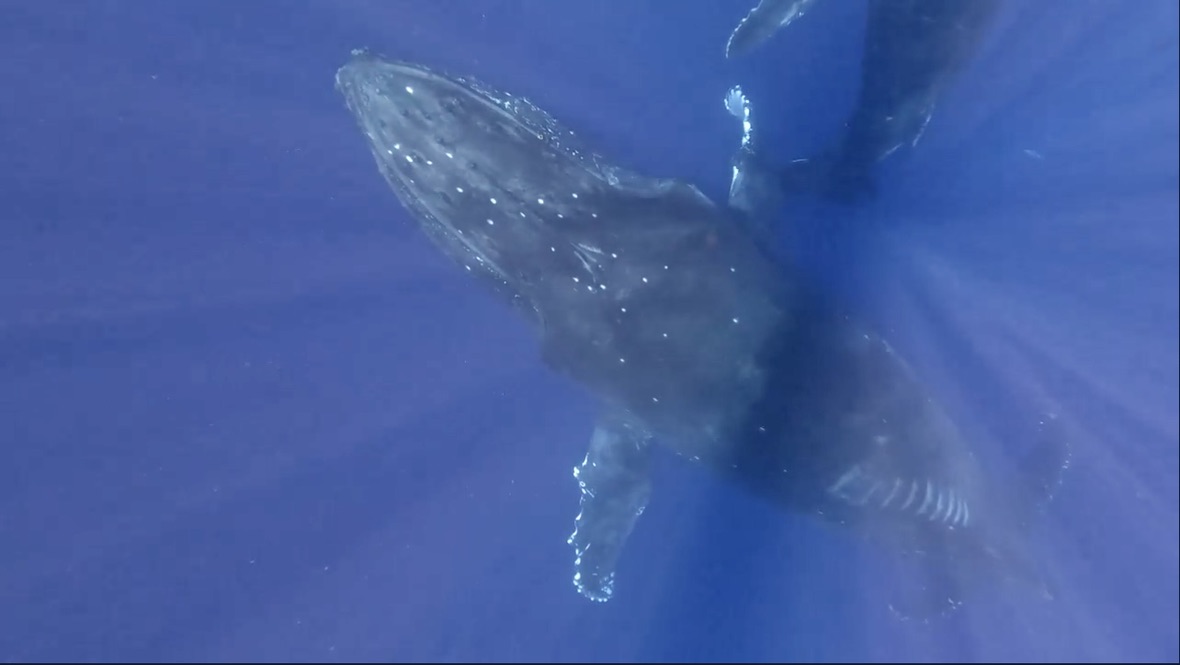
This Humpback whale and calf approached our canoes as we were stopped. They surfaced and swam past us. Kihei, Maui
Dolphins, whales and seals/sea lions are also protected species. And like the sea turtles, they are always amazing to see. Nothing is a joyful to see than a pod of dolphins, a mother humpback whale and her new baby, or a breaching whale.
If you paddle out for a whale watch, here's what you need to remember:
- Remain at least 100 yards away- about the length of a football field.
- Do not chase after the whales.
- Do not swim with them.
- If a whale approaches or surfaces near you, stop paddling. Let the whales move off. Do not watch a whale at surface for more than a few minutes, and do not form a ring around them with other paddlers.
Similar rules apply with dolphins. Here are NOAA's Guidelines:
When Viewing Marine Mammals By Watercraft
When viewing wildlife at sea, all boats, jet skis, paddleboards, kayaks, and other watercraft should maintain appropriate distances from marine mammals and sea turtles, while observing appropriate speed limits.
-
Remain at least 100 yards from large whales, and 50 yards from dolphins, porpoises, seals, sea lions, and sea turtles. Federal law requires vessels to remain 100 yards away from humpback whales in Hawaii and Alaska waters, 200 yards from killer whales in Washington State inland waters, and 500 yards away from North Atlantic right whales throughout U.S. waters.
-
Limit time spent observing individuals and groups of animals to 30 minutes or less.
-
Do not chase, encircle, or leapfrog animals with any watercraft. Do not trap animals between watercraft or the shore.
-
Avoid approaching marine mammals when another watercraft is near. Multiple vessels are more likely to disturb marine mammals.
-
Avoid excessive speed or sudden changes in speed or direction near whales, dolphins, or porpoises.
-
When encountering marine mammals, slow down, operate at no-wake speed. Put your engine in neutral when whales approach to pass.
-
Avoid approaching whales, dolphins, and porpoises when calves are present. Never put your watercraft between a mother and calf.
-
Be wary of breaching and flipper-slapping whales that might injure people or watercraft.
-
Stay clear of light green bubble patches from humpback whales. These are sub-surface bubbles before whales rise to feed at the surface.
-
Never pursue or follow marine wildlife—any vessel movement should be from the recommended distance and slightly parallel to or from the rear of the animal. If you need to move around marine wildlife, do so from behind. Never approach head-on.
-
Do not intentionally direct your watercraft or accelerate toward a marine mammal with the intent of creating a pressure wake allowing them to bow or wake-ride.
-
Slowly leave the area if marine mammals show signs of disturbance.
Remember, specific locales may have additional regulations, so know before you go.
For more information, visit the NOAA website.
Things that Sting
Sometimes coming into contact with jellyfish and other stinging ocean animals is unavoidable. Know what kinds of stinging critters are likely to be in the area you are paddling and take the necessary precautions.
Shuffle your feet to avoid stepping on stingrays in shallow, sandy areas.
Stay off coral reefs to avoid coral cuts, as well as stings from sea urchins and fire worms. Staying off the reef is also essential to keeping our coral reefs and the environment they grow in healthy.
Freshwater
Fresh, inland waters are also great places for cool critter contacts.
Snakes

Non-Venomous Northern Water Snake
Despite common conceptions, snakes are rarely an issue when paddling. Even the much-maligned cottonmouth or water moccasin. Snakes will go out of their way to avoid us humans. Should you see one, just leave it alone. Remember, there are many species of water snakes in the US and only one of them is venomous. If you are paddling in an area outside the US known for its snakes (I'm looking at you, Australia!) chat with the locals. Chances are the same rules apply. Watch where you step getting in and out of the water and leave it alone if you see one. Should you encounter a sea snake, while being highly venomous and toxic, they are extremely docile and bites are rare. Just leave it alone!

Cottonmouth - one of North Carolina's six venomous snakes - on the Roanoke River. Taken with a zoom lens. It did not chase us.
Alligators
American alligators can be found in the Southeast all the way up the eastern seaboard to the northern border of coastal North Carolina. They can also be found in the southern areas of Arkansas, and some parts of Texas and Oklahoma.
Like almost all of the animals mentioned in this post, alligators are not looking to make a paddler a meal. Most incidents usually are the result of the human doing something harrasing or just downright stupid.
Here's how to avoid any negative gator encounters:
- Know your surroundings and be aware. You don't want to surprise an alligator and make it feel threatened. Be especially mindful and on alert when paddling around bends and in areas where vegetation is thick.
- Stay away from shorelines. This is where alligators sunbathe.
- Be especially careful in murky water.
- Stay calm if you see one. Remember, it does not want to eat you. It wants to avoid you. Keep your distance. Paddle away from it.
- Don't be stupid and try to feed an alligator. It's not worth it, even for Instagram.
- Staying in areas with high boat traffic can add a layer of safety. As will paddling with a buddy or in a group.
Manatees
Manatees are primarily associated with Florida, although they have been found as far north as North Carolina. This is another species that is under federal protection, by the same laws that protect whales and dolphins.
Here are the guidelines for observing manatees from the Florida Wildlife Commission:
- Enjoy watching manatees but remember to keep your distance and limit your viewing time so that the manatees do not notice you or your vessel.
- Use caution when paddling near seagrass beds, sanctuaries or refuge area boundaries as manatees will be entering or exiting these areas. Give manatees the space they need to move freely in their habitat.
- Avoid approaching or surrounding any manatees that you or others in your group come upon. Back away until you can observe the animals from a distance. Manatees that frequently encounter paddlers can lose their natural caution around all vessels, which may increase their risk of injury when they approach motorized vessels.
- Manatees should not come in contact with your vessel. While manatees may initiate the contact, paddlers should be aware that manatees are capable of flipping a vessel. Its tail is powerful and could easily upend you if the animal makes a sudden, forceful movement to get out of harm’s way. Back away from the animal until it loses interest in your vessel and resumes its normal behavior.
- If you lead a paddle-sport group or tour, model and promote ethical behavior to your clients. Consider providing optics for client use or encourage them to zoom in closer with a camera or other device.
- Wear polarized sunglasses so that you can see where manatees are located underwater.
- Speak quietly and avoid making loud noises when you are near wildlife areas. Your goal is to view manatees without disturbing them.
- Offering food or water to manatees is prohibited because it alters their foraging behavior and is considered a form of harassment. Give manatees space to search for food and water on their own.
- Paddle your vessel to avoid traveling over resting manatees. Manatees must surface to breathe and will startle awake if you are in the way. Give them space to surface and breathe.
- Calves (very young manatees) and juvenile manatees are cute and curious but they are not pets. Avoid the temptation to rub, scratch or otherwise touch any manatees that surface near your vessel. Remember to “look, but don’t touch” manatees. Be careful not to separate a calf from its mother.
- Research equipment attached to a manatee helps researchers locate and monitor the manatee for further study or for health reasons. This equipment does not hurt the manatee and should not be touched or removed.
- Manatee mating herds are interesting to watch as several bulls (males) pursue a cow (female) until she is ready to mate. For your safety, watch these mating herds from a distance as the animals are focused on mating and do not heed intruders in their midst.
- Lower your anchor slowly when you want to secure your vessel as there may be resting manatees below your vessel that you may not see.
- It is okay to take pictures of manatees—please do not lift, touch, hold on to or pose manatees for your pictures.
Birds
Paddling and bird watching can go hand in hand. I have gotten my best views of bald eagles, osprey, herons and kingfishers while on my board or canoe. Avoid nests, don't feed and don't otherwise harrass the birds you might encounter. Just as you would not do to any of the other animals we've talked about in this post.

Respect the Water and Land
It should go without saying that when we paddle, we are visitors. We are paddling in the home of all the animals that swim and live around our rivers, lakes, sounds and oceans. And yet, you don't have to go too far to see way too much evidence that we as humans do not act like visitors in someone else's home.
Start by remembering that you are impacting the habitat and environment of hundreds of animals every time you paddle out. Do everything you can to minimize that impact.
Trash
Do not litter. Pick up other people's trash. If you see a plastic bottle floating in the water, fetch it out. You have room for it on your board or in your boat. Think of the example you are setting by doing that. See some discarded fishing line? Wind it up and take it back to shore where it can be disposed of properly.
Sunscreen
For the love of all things true and holy, stop using sunscreen containing these ingredients:
- Oxybenzone
- Octinoxate
- Octocrylene
- Homosalate
- 4-methylbenzylidene camphor
- PABA
- Parabens
- Triclosan
- Any nanoparticles or “nano-sized” zinc or titanium (if it doesn’t explicitly say “micro-sized” or “non-nano” and it can rub in, it’s probably nano-sized)
- Any form of microplastic, such as “exfoliating beads”
Yes, that means you are going to have to REALLY read the labels. Not all "reef safe" sunscreen really is. In Hawaii, it is THE LAW. Not only is it imperative for our reefs but other aquatic environments as well and for our own skin!!!
Need help with that? Check out Save Our Reef's website.
Fishing
Pick up your fishing line. Practice catch and release techniques. Follow all local, state and federal regulations.
Practice Leave No Trace principles
Minimize your impact to the areas where you paddle by leaving it cleaner than when you found it. Don't take anything but photos (and the trash you collected!) and leave only footprints.
This may sound like a bunch of rules but the bottom line is, we want to be able to paddle in the ocean and in our waterways for as long as we can, and for our kids and their children to have the same experiences. Repecting our oceans and waterways and the animals that depend on them protects our paddle places and ultimately, our own existance!
Paddle Events
18th Annual Washington Canoe Club Kumu’ohu Challenge
DeSatnick Foundation Around the Cape Paddle
Ohio River Paddlefest Races
Recent Classifieds
2018 Starboard Allstar 14 x 24.5 $999
- Sell
- 5 days ago
- Stand Up Paddleboard
- 07005 Boonton , New Jersey United States
- 85 views
OC1 Ehukai
- Sell
- 5 days ago
- Outrigger
- Wilmington , North Carolina United States
- 61 views
SUP Surf Nolte 8’10”
- Sell
- 1 week ago
- SUP Surf
- Wilmington, NC
- 97 views
Sunova Ocean Faast
- Sell
- 2 weeks ago
- Stand Up Paddleboard
- Rock Hill , South Carolina United States
- 134 views
14′ Infinity Race SUP
- Sell
- 2 weeks ago
- Stand Up Paddleboard
- Newport Beach , California United States
- 181 views
Subscribe for Premium Content and Coaching
Join the Paddle Monster paid Plan Today!
You May Also Like

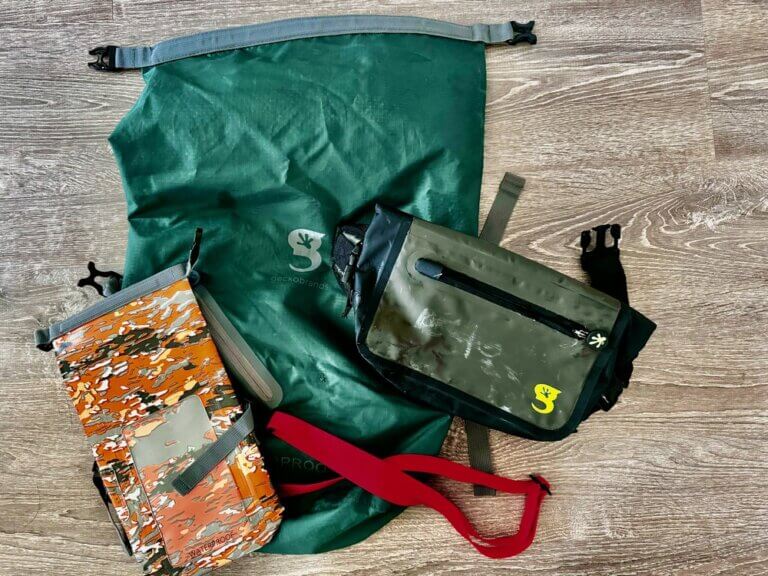
Gear Review: Geckobrands Waterproof Drybag Essentials


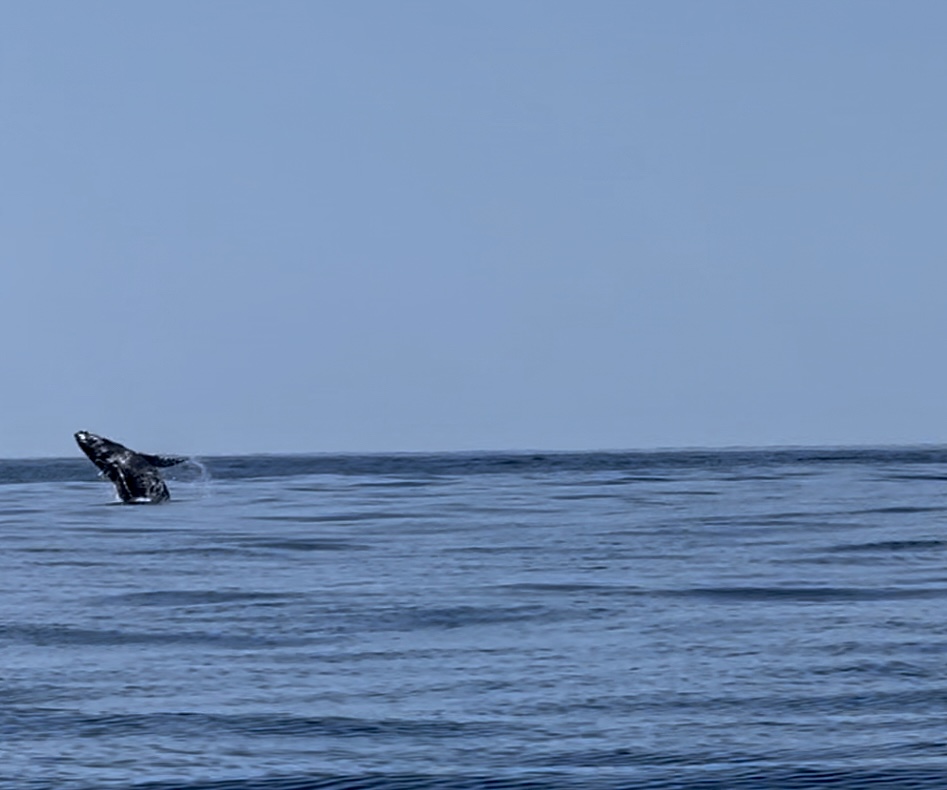
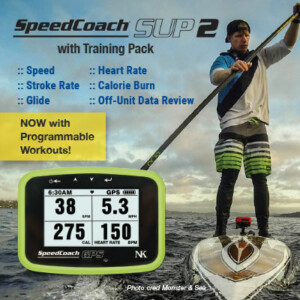
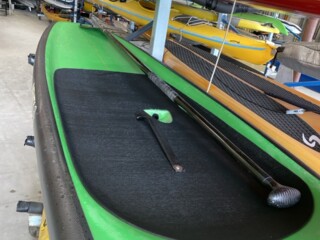
1 Comment
mona r barbera
Thanks Lisa, that was very informative.